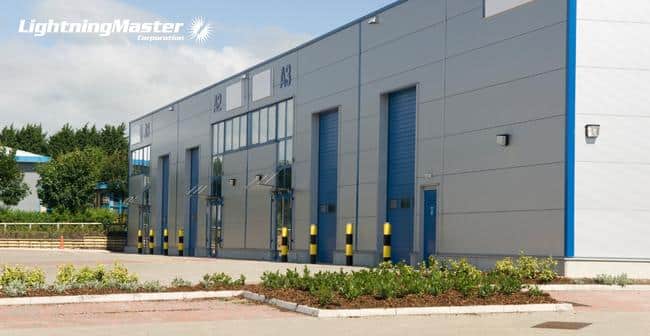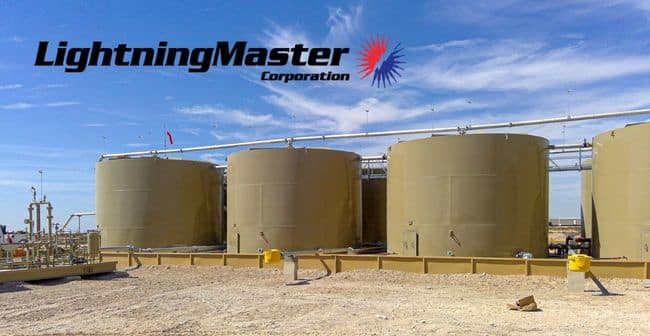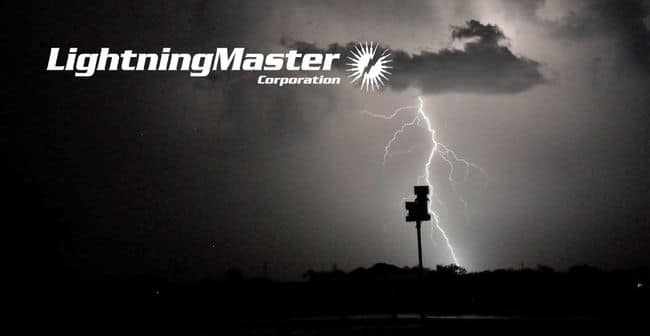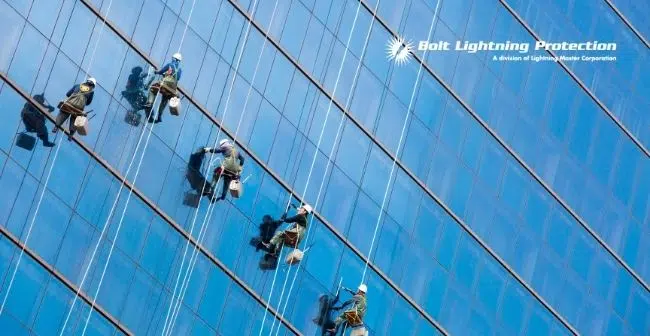Storage Tank Lightning Protection Needs to be Taken Seriously
Storage tank lightning protection is a highly debated area in the world of lightning protection. However, everyone involved in lightning protection agrees that tanks, especially those used in the oil and natural-gas field, need lightning protection of some kind. An exception to this is if the tanks themselves are made with steel of a certain thickness. Even in those cases, you can never be too careful because of what products tanks are storing. That is why storage tank lightning protection for oil and natural gas takes on a whole new meaning.
Getting exact information on lightning-related fires is not easy. One reason is that when a fire happens at an oil and natural-gas facility, the exact cause is rarely publicly released. The second reason is that many oil companies do not want to give the impression that their facilities are dangerous or unsafe.
Susceptibility
The fact is, some places in the country, and the world, for that matter, are more susceptible to lightning strikes than others. Florida and Texas, for example, have some of the highest rates of lightning strikes, compared to other parts of the nation. If you are managing an oil and natural-gas facility in these two states, it amplifies the need for better storage tank lightning protection.
How to go About Storage Tank Lightning Protection
In the past, lightning protection systems (LPS) involved sticking a metal rod into the ground. Nowadays, storage tank lightning protection involves a three-step process:
- Protection of the structure
- Grounding/Bonding
- Surge Suppression
Structural tank lightning protection employs the basic conventional system with modified air terminals which are designed to reduce the incidence of direct strikes to the protected structure. In other words, SRATS reduces the likelihood of direct lightning strikes.
The next step in storage tank lightning protection is grounding and bonding. The purpose of bonding is to bring all the steel equipment to the same electrical potential. The argument is that electricity travels at the same velocity throughout the structure; an important aspect of lightning strike control. Next, grounding is done to ensure that the current escapes to the earth properly. Bonding in conjunction with grounding is highly important to create a safe working environment.
Lightning Master also offers a full line of sub-panel TVSS devices to limit the “sharing” of internally generated transients. These devices are installed on your sub-panels, so that when a transient originating on one circuit travels back to its sub distribution panel, TVSS device limits it before it can be redistributed onto other circuits within the panel, including circuits feeding your sensitive equipment. This approach of installing multiple TVSS devices in series is called “staged protection”, and is particularly effective in limiting damage from both externally and internally generated transients.
Telephone and Data
Telephone and data line transients may be high voltage, but are usually relatively low amperage, the current being ultimately limited by the wire size. However, telephone and data devices tend to be very susceptible to damage or interruptions caused by transients.
Therefore, high speed, tight clamping value TVSS devices should be employed at your telephone and data service entrances. Lighting Master offers a full line of TELCO and DATA TVSS devices for all applications, including POTS lines, T-1, and computer networks.
RF Transmission Line
Since RG transmission lines are connected to antennas which are often the highest structure in the area, they are capable of delivering high voltage, high amperage transients to your facility. Since DC power may be fed up a transmission line to power equipment near the antenna, TVSS devices for this application may have to be designed to allow DC power to pass unobstructed. Conventional devices employing internal RF coupling and gas tubes wired at a right angle to the main path thorough to the equipment are no longer capable of protecting modern equipment.
Contact Lightning Master for More Information on Storage Tank Lightning Protection
If you are in any need of storage tank lightning protection, contact Lightning Master at 727-447-6800 and a friendly staff member will provide you with assistance.




